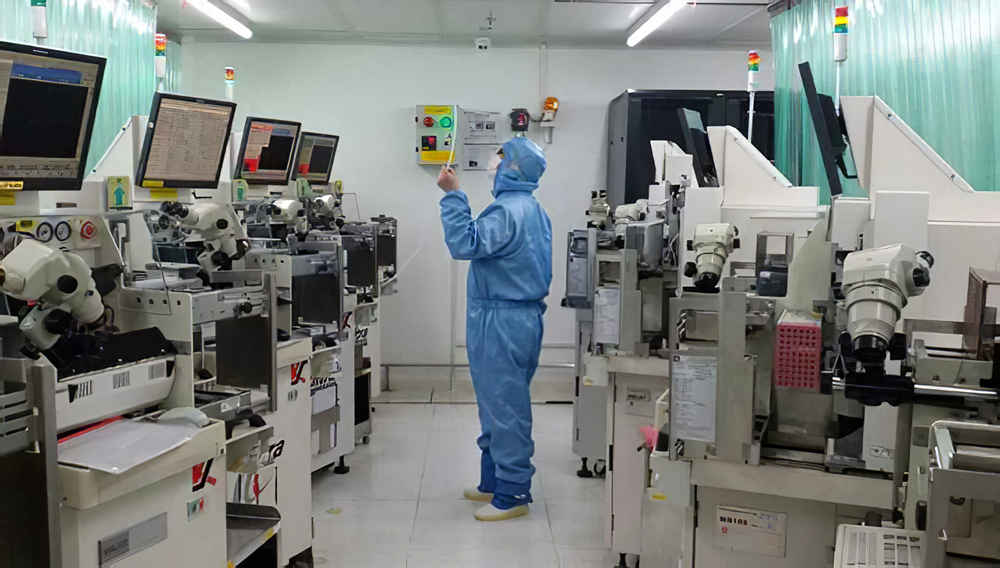COMPANY NEWS
Classification of clean rooms
A clean room is a room with a controlled concentration of airborne particles that is constructed and used in a manner to minimize the particles that enter, are generated and are retained in the room. The temperature, humidity, pressure and other relevant parameters in the room are controlled as required (ISO14644-6).

The four major technical elements of clean rooms:
1. The supply air must undergo at least three levels of filtration (coarse effect, medium effect and high efficiency), and the high-efficiency filter should be set at the end of the system.
2. The clean room should have sufficient air supply volume for purification and air conditioning.
3. The clean room should maintain the necessary pressure gradient (positive pressure gradient or negative pressure gradient).
4. The clean room should have reasonable air flow organization.
Classification of clean rooms:
According to the air flow type, clean rooms can be divided into: unidirectional flow clean room; non-unidirectional flow clean room; mixed flow clean room; vector flow clean room.
1. One-way flow clean room: One-way flow (laminar flow) clean room, which is divided into vertical one-way flow clean room and horizontal one-way flow clean room.
The purification principle of one-way air flow is the piston and extrusion principle, which squeezes the dust out from one end to the other end and replaces the polluted air flow with clean air flow. Including vertical one-way flow and horizontal one-way flow.
Vertical one-way flow is an air flow pattern in which air flows from the ceiling to the floor at a certain speed (0.25m/s~0.5m/s). This airflow can create cleanliness levels of Class 100, Class 10, Class 1 or higher. However, its initial investment and operating costs are high. During the project, the area should be reduced to the minimum and only the necessary parts should be used.
Horizontal unidirectional flow is an air flow pattern in which air flows from one wall to the opposite wall at a certain speed (0.3m/s~0.5m/s). This airflow can create 100 levels of purification. Its initial investment and operating costs are lower than those of the vertical one-way flow type.
2. Non-unidirectional flow clean room: The airflow pattern of non-unidirectional flow clean room can be divided into top-feeding and lower return; top-feeding and lower-side return; top-feeding and top-returning, etc.
The purification principle of non-unidirectional air flow is the dilution principle. The general type is air supply from the top of the air supply port of a high-efficiency filter; the return air types include lower return air, side lower return air, and top return air. Depending on the number of air supply and air changes, different purification levels can be achieved, and the initial investment and operating costs are also different.
3. Mixed flow clean room: Mixed flow air flow is an air flow pattern formed by combining vertical unidirectional flow and non-unidirectional flow. The characteristic of this air flow is to compress the vertical one-way flow area to the minimum, and replace the large-area one-way flow with a large-area non-unidirectional flow to save initial investment and operating costs.
4. Sagittal flow (diagonal flow) clean room: Choose an airflow pattern in which the arc-shaped high-efficiency filter air outlet on the upper side supplies air and the lower return air outlet on the opposite side returns air.
The airflow in the sagittal clean room flows out in radial streamlines, with no vertical intersections between the streamlines. A relatively small amount of air supply can be used to achieve a higher level of cleanliness. It is mostly used in small clean rooms in pharmaceutical, medical and electronic industries. It is also widely used in some special laboratories.
According to the main control objects of the clean room, the clean room can be divided into: industrial clean room; biological clean room.
1. Industrial clean room: The main control object of an industrial clean room is dust particles (whether living or inanimate). Industrial clean rooms are mainly used in electronics, aerospace, aviation, machinery, chemical industry, chemical pharmaceuticals, energy, nanometer and other industries. In particular, the electronics industry and optoelectronics industry are inseparable from clean rooms and clean technology.
2. Biological clean room: The main control objects of biological clean rooms are living and viable microbial particles, such as bacteria, viruses and other particles that are harmful to humans, animals and the environment. Biological clean rooms are widely used in medical care (clean operating rooms, clean wards), biopharmaceuticals, experimental animal breeding, biosafety laboratories, health, epidemic prevention and quarantine. The development of biological clean rooms is very fast and has been recognized and valued by all parties.
